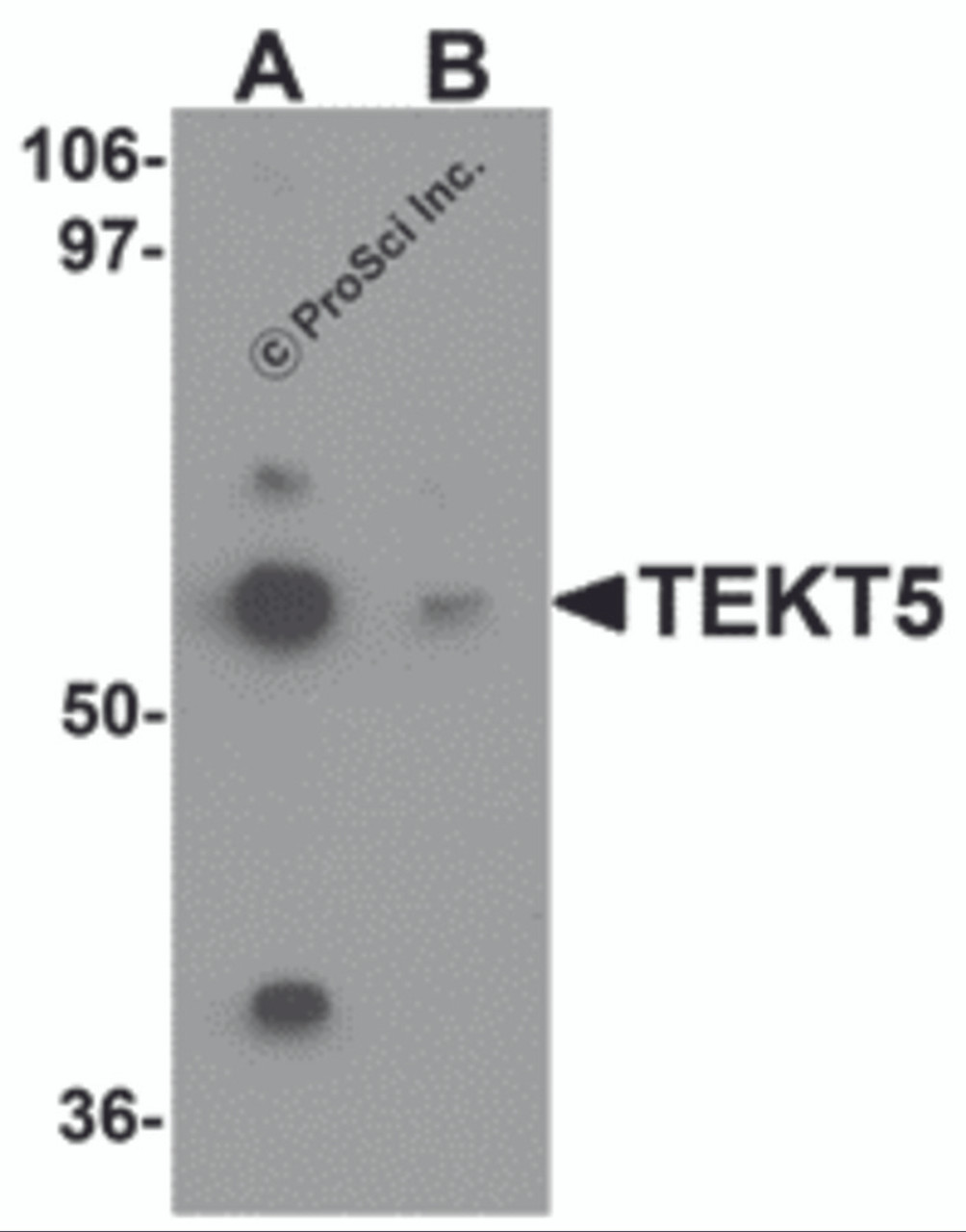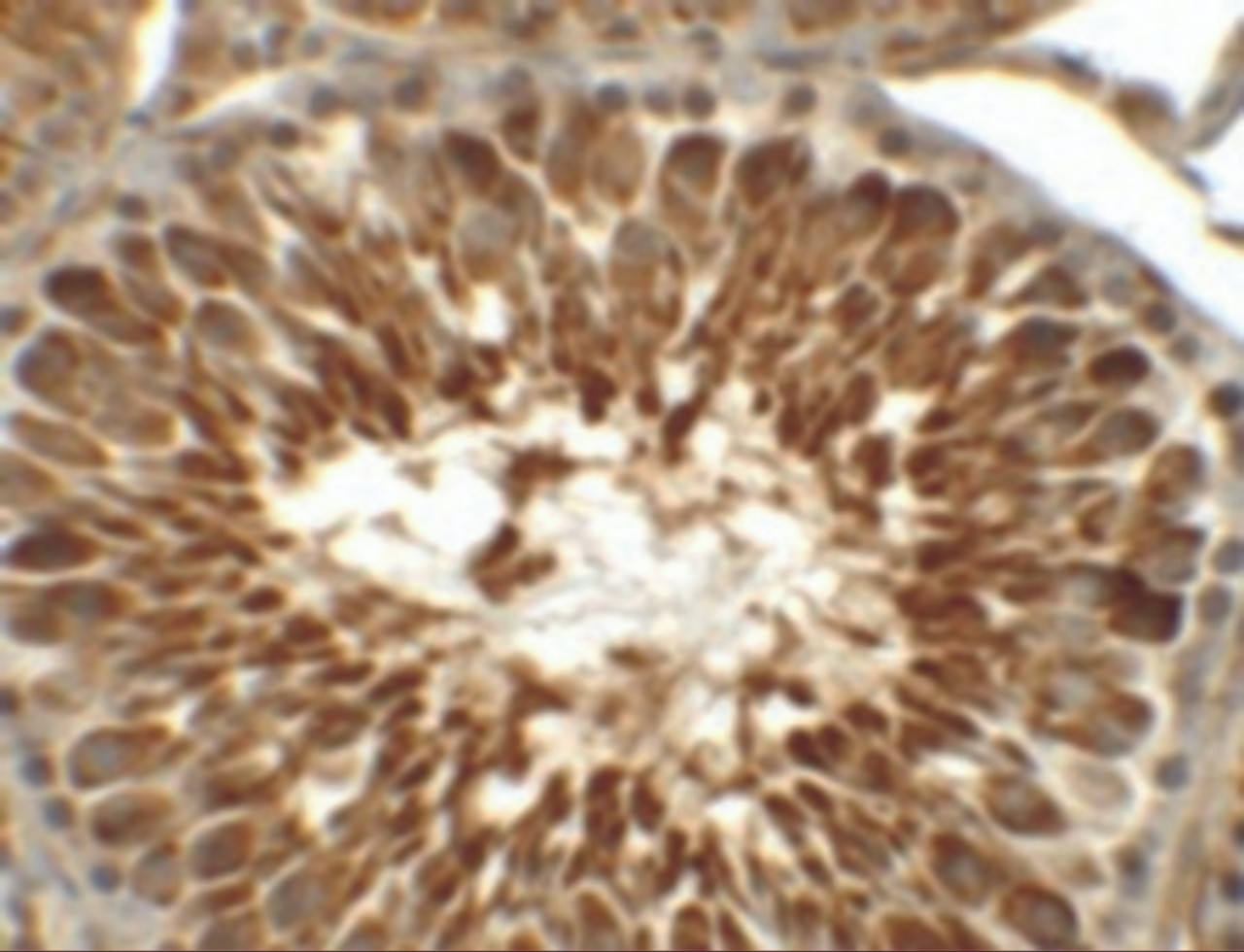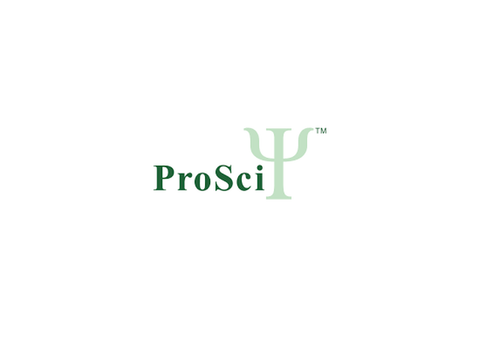Product Description
TEKT5 Antibody | 6383 | ProSci
Host: Rabbit
Reactivity: Human, Mouse, Rat
Homology: Predicted species reactivity based on immunogen sequence: Bovine: (88%)
Immunogen: TEKT5 antibody was raised against a 17 amino acid synthetic peptide near the center of human TEKT5.
The immunogen is located within amino acids 220 - 270 of TEKT5.
Research Area: Homeostasis
Tested Application: E, WB, IHC-P
Application: TEKT5 antibody can be used for detection of TEKT5 by Western blot at 0.5 μg/mL. Antibody can also be used for immunohistochemistry starting at 5 μg/mL.
Antibody validated: Western Blot in mouse samples and Immunohistochemistry in rat samples. All other applications and species not yet tested.
Specificiy: This antibody is predicted to not cross-react with other Tektin protein family members
Positive Control 1: Cat. No. 1282 - 3T3 (NIH) Cell Lysate
Positive Control 2: N/A
Positive Control 3: N/A
Positive Control 4: N/A
Positive Control 5: N/A
Positive Control 6: N/A
Molecular Weight: N/A
Validation: N/A
Isoform: N/A
Purification: TEKT5 Antibody is affinity chromatography purified via peptide column.
Clonality: Polyclonal
Clone: N/A
Isotype: IgG
Conjugate: Unconjugated
Physical State: Liquid
Buffer: TEKT5 Antibody is supplied in PBS containing 0.02% sodium azide.
Concentration: 1 mg/mL
Storage Condition: TEKT5 antibody can be stored at 4˚C for three months and -20˚C, stable for up to one year. As with all antibodies care should be taken to avoid repeated freeze thaw cycles. Antibodies should not be exposed to prolonged high temperatures.
Alternate Name: TEKT5 Antibody: CT149, Tektin-5
User Note: Optimal dilutions for each application to be determined by the researcher.
BACKGROUND: TEKT5 Antibody: Tektins are insoluble alpha-helical proteins related to intermediate filament proteins and are essential for the assembly of cilia and flagella. Tektin-5 (TEKT5) is a recently identified member of the Tektin family. It is predominantly expressed in testis, and its expression is upregulated during testis development. It is present in sperm flagella but not in heads, suggesting that it may act as a middle component required for flagellar stability and sperm mobility.
 Euro
Euro
 USD
USD
 British Pound
British Pound
 NULL
NULL















![TEKT5 Antibody (Center) [AMM08695G] TEKT5 Antibody (Center) [AMM08695G]](https://cdn11.bigcommerce.com/s-452hpg8iuh/images/stencil/500x659/products/864144/1156211/logo__92149.1659788186__65709.1659860051.png?c=2)
